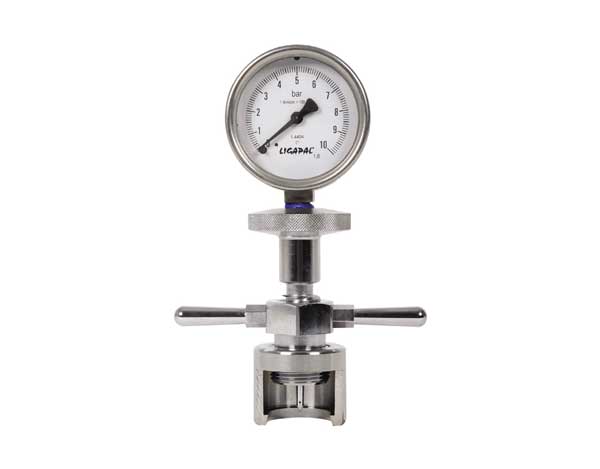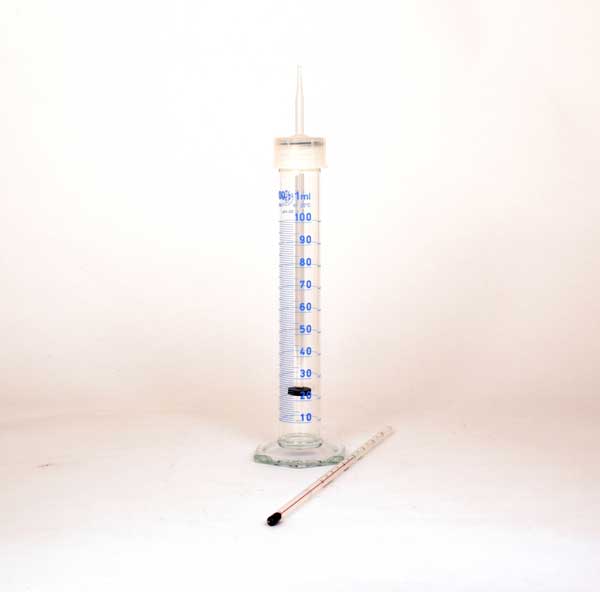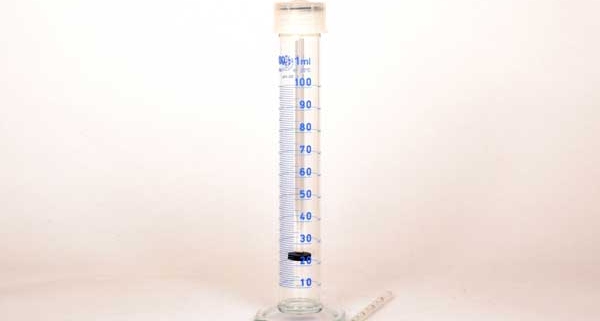Brettanomyces and Under Pressure! – Testing Times – September 2018
Brettanomyces
A customer recently sent a number of red wine samples to check for the presence of Brettanomyces. After discussions it was decided to plate the wines for the microbial presence of Brettanomyces bruxellensis (aka Brett) colony forming units and also to measure for the presence of the marker compounds 4 ethyl phenol and 4 ethyl guaiacol (4EP & 4EG).
The results were interesting. Some of the samples had relatively high 4EP & 4EG results but no colonies grew on the plates, one sample however had relatively high 4EP & 4EG results with over 1000 colony forming units per millilitre (cfu/mL) on the plates.
Further discussion showed that the winemaker had recently added sulfur dioxide to the wine that had no Brett cells that could be cultured. It appears that the addition of the sulfur dioxide affected the Brett cells in that wine prior to the sample being taken. The situation with viable but non culturable (VBNC) yeast cells and the effect of sulfur dioxide has been shown previously (1).
It’s not unusual for wines to have high 4EP & 4EG but no culturable Brett cells. Whilst this might seem counterintuitive it does make sense. The volatile phenols are released from both live and dead Brett cells and so the levels of these compounds can continue to climb in the presence of dead cells.
Incidentally all of these wines had pH levels of at least 3.6 and substantially higher. These pH levels would have exacerbated the problem as it is well known that sulfur dioxide is less efficacious at these higher levels. In fact lower pH levels (below say 3.5) and higher levels of sulfur dioxide might have averted this situation from occurring at all.
So the winemaker did the right thing by checking for Brett by sensory analysis and then getting Brett testing done. However, a better plan (and this is likely to be implemented from now) is to improve the management of pH and sulfur dioxide to more optimum levels initially, whilst still checking Brett by sensory analysis. This provides a less conducive environment for this pest to start growing in the wine.
The pressure of measuring carbon dioxide in wine
We recently had an enquiry about the best way to measure carbon dioxide in wine – and we found it wasn’t easy to give a simple answer. So we thought a brief item on how carbon dioxide is measured may be useful.
As all winemakers know, carbon dioxide is an integral part of wine making; it is produced by yeast as a natural product of fermentation and is used to make the bubbles in sparkling wine. The level of dissolved carbon dioxide in a wine can greatly affect the taste of the wine, both in sparkling and still wines. For example, the lack of fizz in a sparkling wine is very noticeable and makes the wine seem flat and very second rate. Carbon dioxide’s sensory role is well known and acceptable levels in both still and sparkling wines are normally set by producers.
Sparkling wine
There are regulations about the level of carbon dioxide in sparkling wines which vary from country to country. In Australia the definition of a sparkling wine comes from the Australian Foods Standards Code, in particular Standard 4.5.1. (2). The main points in regard to carbon dioxide are:
- The product consisting of wine that by complete or partial fermentation of contained sugars has become surcharged with carbon dioxide
- must contain no less than 5g/L of carbon dioxide at 20°C
Internationally a major authority is the International Office of Wine and Vine (OIV). The OIV define the level of carbon dioxide in sparkling wine as:
“ Special wines produced from grapes, musts or wines processed according to techniques accepted by OIV, characterised on uncorking by the production of a more or less persistent effervescence resulting from the release of carbon dioxide of exclusively endogenous origin. The excess pressure of this gas in the bottle is at least 3.5 bars at 20°C.” (3)
Measurement of Carbon Dioxide
To ensure the correct levels of carbon dioxide in your wine, several measurement techniques are typically used. In sparkling wine this normally involves measuring pressure; in still wines titration is typically used. The equipment used in these techniques includes pressure gauges, bench top instruments that measure direct pressure from a bottle, titration and carbodoseurs.
Sparkling wine
Sparkling wine producers typically determine the amount of carbon dioxide by measuring the pressure in a bottle. A pressure gauge that is fitted to a bottle, called an aphrometer, is often used in a set number of bottles in a batch (see Figure 1). Aphrometers are relatively inexpensive devices. Normally a pressure of 6 to 7 bar is aimed for, this being due to the level of carbon dioxide in the wine. As well as using an aphrometer there are laboratory instruments that pierce the closure on a sparkling wine bottle and measure the pressure directly and accurately, although such instruments are quite expensive.


Figure 1: Aphrometer
Still wines
The exact level of carbon dioxide in still wine is usually less of a concern to a winemaker than in a sparkling wine. Needless to say, low levels are desired. An easy and low cost way to measure low levels of carbon dioxide can be performed by titration against a standard acid solution after any carbon dioxide in the sample has been fixed by alkali addition. Although this test can be used for still and sparkling wines it is usually used for still wines. Our in-house titration method reports results to two significant figures with a limit of detection of 0.10 g/L.
Another technique is the simple and cheap carbodoseur – a glass volumetric device that measures the volume of carbon dioxide from a fixed quantity of wine (see Figure 2). Comparing this volume to a calibration chart that corrects for temperature gives the amount of carbon dioxide contained in a wine sample in g/L. It is relatively easy to use and gives good results, although it is not as accurate as the other methods listed above.


Figure 2: Carbodoseur
Summing up, the level of carbon dioxide in wines is an important parameter. There are three main ways to measure the level of carbon dioxide, which is by pressure, volume or by direct titration. These techniques can be done by either quite expensive equipment or some very inexpensive ones.
References
Agnolucci, M, et al, Int. J. Food Microbiology, 143, 2010, 76-80
Australia New Zealand Food Standards Code, Standard 4.5.1 – Wine Production Requirements, www.foodstandards.gov.au
International Code of Oenological Practice, Code Sheet 4.4 Sparkling Wines, www.oiv.int




